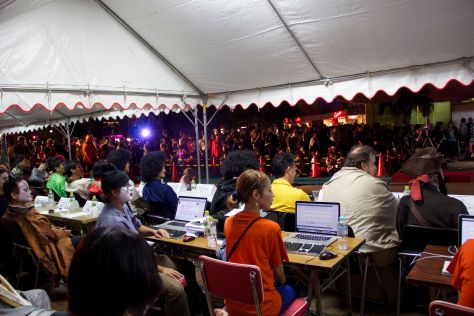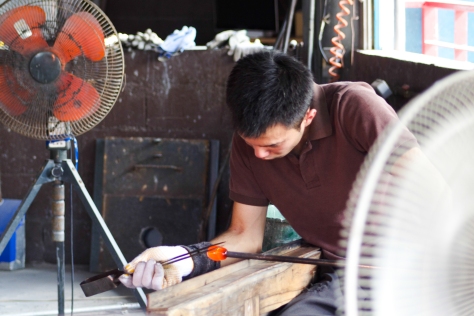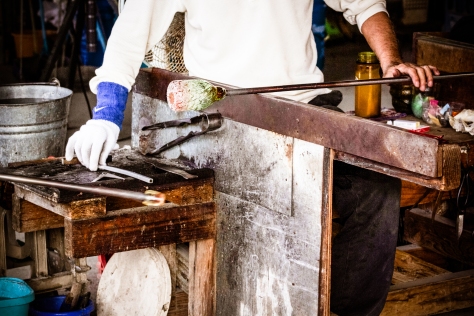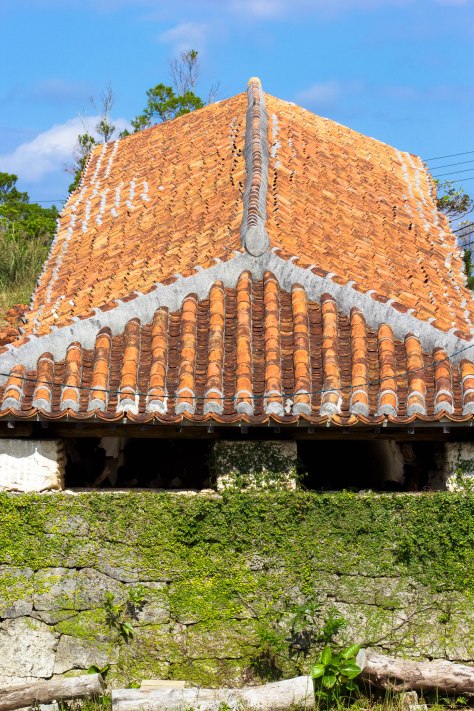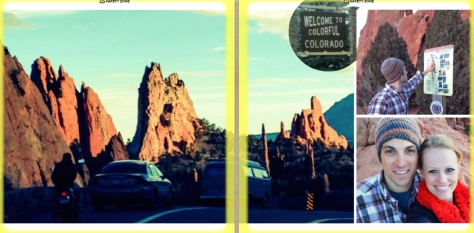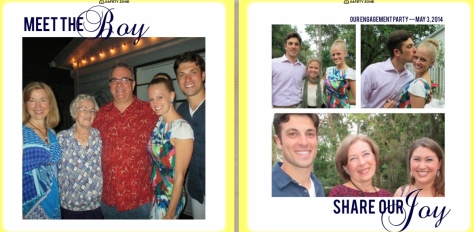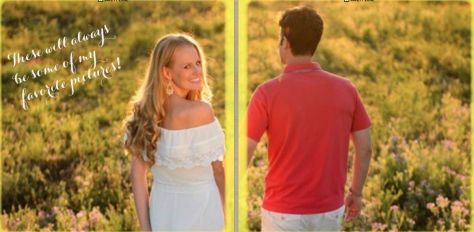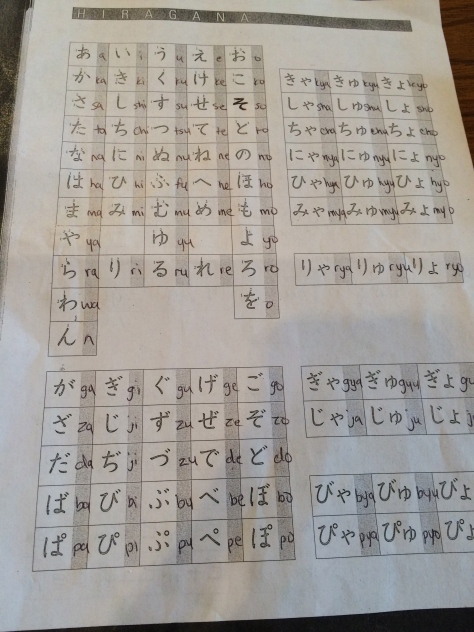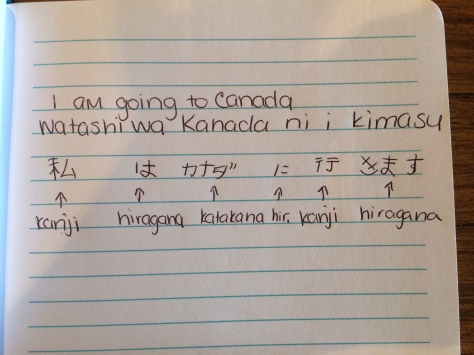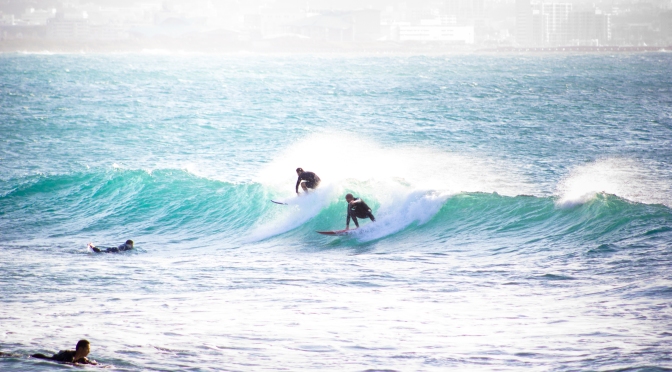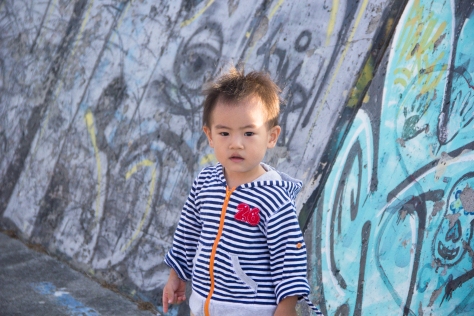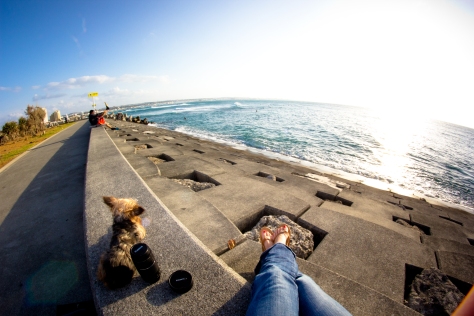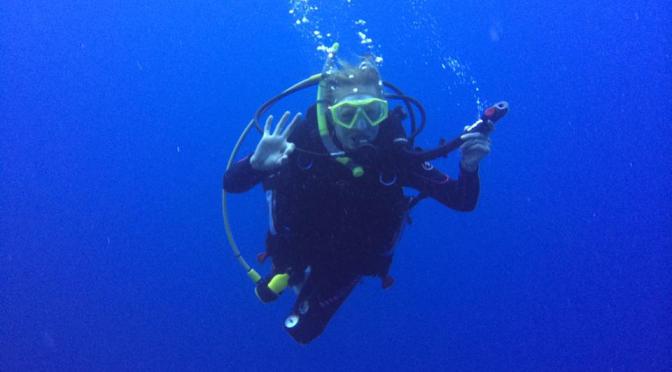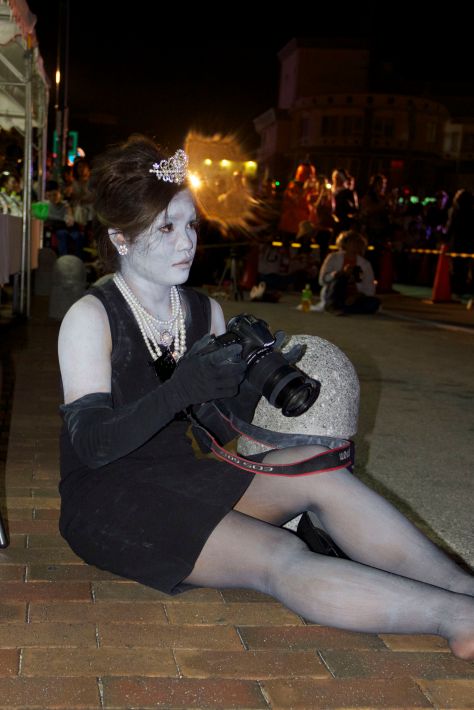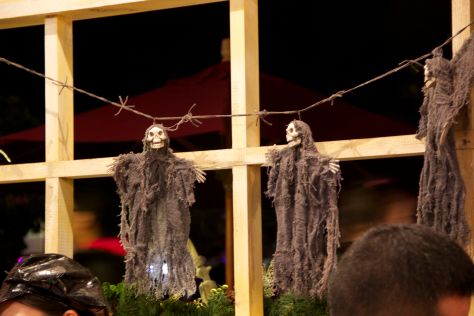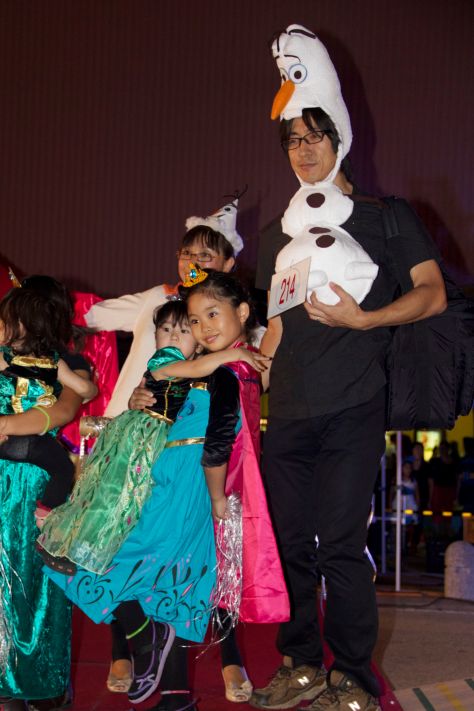All of our “home goods” (i.e. everything we own that didn’t go into storage) arrived in Japan today. Two trucks pulled up, with 6 Japanese moving ninjas, and they unloaded the 8 pallets of stuff we brought. While they carried the boxes up and I ticked them off the 8-page inventory list, it reminded me how differently my last move unfolded. And yes, Japan is a big deal, but that move- from Florida to New York- will always feel like the most significant move of my life.
I landed at JFK with two huge suitcases, a small rollaboard, and the requisite sorority girl Vera Bradley duffel bag thrown over my shoulder. I had arrived. I felt like the budget shoe-clad version of Carrie Bradshaw as I confidently stepped toward the luggage carousel, ready to grab my bags and dart off to my new apartment in midtown. I wrestled the first suitcase off of the conveyor belt and stood it up. I took in the cat scratches the bag had acquired over the last decade in my parents attic. Maybe I wasn’t quite Carrie Bradshaw material just yet. Ahhh… but Holly Golightly! She’d certainly run into something like this along the way that no-named cat of hers. I kept my head high, thinking pearls might have been a nice touch. The second suitcase came into sight. Not so bad, I thought. It clearly hadn’t weathered nearly as many years. I yanked it off of the belt and then just stood there for a second.
How do people roll three suitcases at one time? I wondered. Examining all of my bags. I hadn’t thought about this. The taxi stand was at least 300 yards away. I couldn’t very well do relays, or could I? If your first thought is to wonder why I didn’t instinctively grab a luggage cart, then I would say you are clearly not a seasoned backpacker. I’d never traveled with more than I could carry before, and the truth is, it really just never occurred to me that the carts were an option. So here was my solution: I half-balance the rollaboard horizontally across one of the suitcases and pushed it ahead of me, while I pulled the second one behind me, the duffel bag on top of it. Good enough in theory, but not functional. I could push/pull this way for about 10 feet before the rollaboard would start slipping and I’d have to readjust everything. I felt a little bit of my Golightly-resolve draining with every step.
“This is ridiculous.” I remember thinking, and luckily (I guess) for me, I was not the only one who thought so. After about 50 yards, an older couple who had been on my flight asked if I would like any help. I quickly sized them up, decided they were unlikely to take off running with my cat-scarred suitcase, and nodded sheepishly.
“Yes, I would really, really like your help,” I told the lady, and her husband took one of the larger suitcases from me. We made our way over to the taxi stand, and bless their hearts, they never even pointed out that I could have gotten a luggage cart. (In fact, it wasn’t until nearly a year and a half later when I landed in Tokyo with my husband that I realized what an obvious solution it would have been to my NYC-luggage predicament.) “You stay with the bags, I’ll grab a cart,” he said. “A cart!” I thought. “Of course!”
I pulled the card from my pocket and memorized my new address while I waited for a cab: 455 West 34th Street. That should be easy enough. I got in the cab and said, “Midtown West, please,” hoping I at least sounded like I new where I was going. I could feel myself glowing with excitement as we drove down 34th, past Macy’s, past the New Yorker. I could see the Empire State Building lit up at the opposite end of the street when he stopped the cab and finalized the meter. I looked around in awe that I “lived” here now. I gave him a fifty dollar bill for the forty-something dollar fare. He helped me get my suitcases to the sidewalk, then turned around and got back into the cab. I stood there, on the sidewalk in exactly the same situation I’d been in at the airport: more suitcases than hands, and now, in the middle of midtown Manhattan with absolutely no idea which building was mine. 455… 455…I looked for numbers.
By this time, I didn’t care that I looked stupid anymore- I just needed to get everything inside. I moved one suitcase a couple of feet, then pulled the others to catch up. It took me longer than was necessary, but I made it to the steps, and once there, the doorman came to my rescue. It wasn’t until my next move to an Upper West Side walk-up,that I realized just how much of a luxury that doorman had been.
Maybe I hadn’t made it with nearly as much style and finesse as I would have liked to, but I had, in fact, arrived.
All posts by Mindy
Yomitan Pottery Village: Yachimun no Sato
There is something very thrilling about moving to a country when you don’t speak the language and you don’t know your way around. You feel almost like you are the first to discover each place, as you slowly explore and uncover its secrets. When you stumble upon a restaurant that makes the best yakisoba you have ever tasted, you feel like you have earned it. When you sit down somewhere and realize they only serve cow tongue and intestines (more on that later) you chalk it up as an experience.
With that said, there is also something immeasurably convenient about knowing someone who has already done all of the exploring and can just tell you how to get to the best fish markets or where to go for a great pedicure. For me, that person has been Callie. And last week she took two of us newbies to “discover” the Yomitan Pottery Village, or Yachimun no Sato.
This adorable little village is comprised of a series of small houses, kilns and shops that sprawl over a small hill in Yomitan, just north of Kadena Air Base. Upon arriving, you park in a well-marked lot, and then meander by foot along the single paved path that connects all of the shops and studios. There are about 45 practicing potters and glass artists who work in this little district. Near the bottom of the hill is a glass blowing studio. Visitors can watch as these glass artists turn old bottles (and all kinds of other things) into beautiful works of art that are then sold in one of the shops. I could have stood there taking pictures all day. It’s hypnotizing to watch them work.
As you continue along, you pass lots of little shops and several red-roofed kilns, including one unique looking structure in the center of the village that we joked resembled a dragon, crawling down the hill. After further research, we discovered there is a pretty good reason for that. This building is actually an old style “climbing kiln” or Noborigama. Several times a year they still fire it up, and the glow produced as it works its glazing magic only serves to enhance its dragon-like appearance. These glazed pieces are sold alongside the more traditional Tsuboya pottery, which is the signature Okinawan unglazed pottery, so the more shops you explore, the more you will find something for every taste.
Pottery prices start around $10 and go up (and up, and up) from there. I found a darling little tea cup and saucer that I just couldn’t walk away from for 2800 yen, or roughly $30. All three of us had said we were on the look out for Shisa1, but didn’t find any that were quite in our price ranges, although I put considerable pressure on Kelsey to spend upward of 5,000 USD on a pair that were pretty magnificent.
- Shisa are the traditional Ryukyuan 2 statues that resemble a lion-dog, and are often found on rooftops or outside the doors of homes and businesses. They were introduced to Okinawa by the Chinese in the 14th century. Generally you find Shisa in a pair, said to be one male and one female. While I had originally been told that the male had his mouth open to ward off evil and the female had her mouth open to keep in the good, I’ve recently read that some believe it is the other way around, and the female opens her mouth to share goodness. One way or another, Shisa are meant to guard your home or place of business and are such a fun part of the Okinawan culture, that we want to find a pair while we are here.
- “Ryukyuan” refers to the culture of the Ryukyu Islands or the Nansei Islands which is the chain of islands south of mainland Japan, which Okinawa is a part of. The culture of these islands is heavily influenced by both Chinese and Japanese customs.
Whether browsing or buying, I’ve added the Yomitan Pottery Village to the list of attractions I am going to recommend for everyone who comes to visit. We had a blast just walking around and exploring these beautiful shops. Plus… I walked out with a piece that makes me feel like I am sipping nectar straight from a flower every time I use it!
My Move to New York: A Story That Was Almost Never Told
Since my 21 birthday, New York has been in the periphery of my mind, just sort of taunting me. A couple of times every year I would think about moving up there, before listing off a dozen excuses of why it wasn’t a good idea.
I’d go to visit friends who had relocated immediately after college, and think, “I should have done that.” But it was always in past tense. I never thought “I should do this,” I just thought, “I should have done this.” New York felt like a move you make at 22, and every year, was another year farther from 22. It was too late and I was too comfortable.
A few years ago I had a summer intern who I just adored. The whole time she worked for me, I found myself dropping hints to her, if not flat out telling her, that she should move to New York after she graduated. She didn’t want to move to New York. It was not her thing. After a while, even I wondered why the heck I was pushing it so hard. Finally she asked me the question I must have been wondering too: Why don’t you move to New York . “I think I’m a little too old to make that move now,” I said, matter-of-factly. And there it was. The truth just staring back at me. I was afraid to start over. More specifically: I was afraid to start over in New York. There was something about that particular city that intimidated me. But the scariest part of the entire conversation, and probably the part that shaped the year to come, was the fact that I had used the descriptor “too old” as an excuse not to do something. I was 27. This was deeply unsettling.
Rewind about 10 years to the days that I used to tape quotes to the back of my bathroom door. (Remember those days? When we didn’t just “Pin” inspirational quotes, but we actually wrote them down?? And if you were as cool as I clearly was, you might have even trimmed the edges with those ultra-fancy, decorative-edged scissors. Yeah… those were the good old days.)
Well, one of my favorite quotes read:
What you are most afraid of is a clear indicator of what you must do next.
I tried to live my sixteen-year-old life like that, to the best of my limited ability given that… I was 16… and most of the things that scared me were also things that I was (and should have been) expressly forbidden to do. What is the world had made me quit living that way?
There I was: 27 and terrified to quit my job and move to New York to start over. I had no job prospects, no solid connections, and no idea where to start. For those of you who know my story, you know that I started by quitting said job, and taking off on a four-month backpacking trip through Southeast Asia. But when I got back to the States, I gave myself one month to wrap up loose ends, sell my car, pack four suitcases and make the move: To the city that scared me most.
While I was in New York I didn’t write about it- or at least I didn’t post anything I wrote about it. Maybe because all of the things that I was uncovering were things that my peers had discovered when they were 22, and again… I still felt old. But it was a story that was so worth sharing- that I have decided to start writing about it now.
So yes, I’m currently living in Japan, but over the next few months, I am also going to tell the story of one of the best adventures I almost didn’t take.
I know my mom’s been waiting for these stories for a long time. Hope some other people enjoy them too 🙂
2014 Has Been a Trip (a lot of trips, actually) And Such an Adventure!
I get lost every time I try to tell the story of this past year. It’s been a whirlwind that took me all over the United States before finally dropping me off in Japan. I started the year happily dating my best friend and ended up as a military wife living abroad.
This year has sent us driving across the U.S. (or at least half of it) 5 times. I can’t tell you how many flights I’ve taken or suitcases I’ve packed, but I think if I could, the number would overwhelm me. This year has been miserable and magical. And while the magic has greatly outweighed the misery- I’d be lying if I pretended that this 2014 was a walk in the park.
Last week I got a reminder email that the photobook coupon I purchased through RueLaLa was about to expire. Although I should probably have used it for wedding photos, I decided I would do a “quick recap” of the Stateside portion of our year instead. HA! There is nothing quick about it, but gosh, what a beautiful adventure it’s been. I’d love to have a post on every city we visited, and who knows, in time maybe they will come, but for now, I’m just really glad there was an expiration date that forced me to record it all before I forget just how crazy this year really was!
On January 1, I lived in New York City. On February 1, I lived in Wichita, Kansas. On April 1, I lived in Tampa, Florida. As of October 1, I now live in Okinawa, Japan. I rang in 2014 surrounded by boxes, and as of November 14, 2014, I have yet to unpack them. I’ve been living out of one suitcase or another for almost a full year, and I wouldn’t change a single thing.
What is it that Helen Keller is always quoted saying? “Life is either a daring adventure or nothing”? Well: at least I can live confidently in the fact that 2014 was not nothing.
Japanese 101
One of my goals when we moved to Japan was to learn the language fluently enough to converse comfortable and someday to be able to teach our children. I immediately enrolled in the free Japanese class offered on base that meets on Monday and Wednesday night, bought a stack of note cards and told myself I was on my way! I’d be communicating in no time.
False.
So far I am comfortable with exactly three phrases:
- Domo arigato gozaimasu
- Sumimasen
- Yoi ichinichi o
Translation: thank you, sorry and have a good day.
I was at lunch with a friend yesterday and a Japanese man asked me if I knew where a certain hotel was. He made an effort in English, and I so wanted to return that by trying out Japanese. “Hai,” I said. Which means yes, but was a lie. I didn’t know where the hotel was. “Hai” just sort of popped out. I started shaking my head. “Sumimasen. No. Umm… Maybe that way.” I pointed and shrugged as if to say, “I apologize for being completely useless”. He smiled and bowed and thanked me anyway. I bowed and thanked him back because other than “sorry” it’s one of the two other things I can say. As he walked away I looked at my friend and said, “Ah!! I just learned how to say good luck! It’s on a note card in my purse. This would have been a perfect opportunity to practice!”
I reviewed my note cards on the way home: Ganbatte Kudasai. Damn. So close.
When I took French in high school, I don’t remember it being difficult to learn the basics. I remember having conjugating issues, but I don’t remember stumbling over the most basic of vocabulary. When I took Spanish in college, I remember it coming really easily and sticking with me. This was my expectation when I moved to Japan. I imagined myself laughing with the locals in their native language, being witty and I’ve been here for a month and a half now and I basically just walk around saying, “sorry”. This morning I woke up motivated. No more two days a week for me! Today I was going to conquer hiragana! Watch out Japan.
There are three different writing systems in Japanese: kanji (which are the Chinese symbols that are sounds/words with meanings associated with them), hiragana, and katakana. The latter two are the two sets of characters that have corresponding sounds and build words in Japanese (the alphabets, for lack of a better word). Given that a college educated scholar knows about 6000 kanji and there are approximately 2000 kanji characters used routinely in Japanese, most non-native speakers don’t study kanji (or at least not in the beginning.)
There are 46 characters for basic syllables in both the hiragana and katakana “alphabet”. They both expand from there with modified syllables for consonants plus vowels, and modified syllables for consonants plus ya, yu, yo. Example: ba, bi, bu, be, bo, bya, byu, byo. Not to mention double consonants and long vowels.
A very basic sentence, can use characters from all three writing systems: kanji, hiragana, and katakana. Example:
My goal this morning was to familiarize myself with the 46 basic hiragana characters. It’s noon now and I have been at it for about 4 hours. Dane went to the hardware store to buy lumber for a table he is building, and he’s already back with groceries and lunch. In that time I have “mastered” 26 characters according to my software program. (And as you can see, I’ve decided to take a blogging break.)
At this rate, it is likely he could build an entire house before I will be speaking Japanese well enough to teach our unborn children. But I’m not going to give up. The next time someone asks me for directions, I doubt I will be able to help them, but I’m at least going to be able to wish them luck.
Surfers and Serial Killers
The temperatures are finally starting to fall into the low 70’s in Okinawa, and with cooler temperatures, have come bigger waves.
The last couple of days have been slammed on the south end of the Sunabe Seawall. A crowd has formed on the South Steps every morning and evening to take in the surf. If I stand on my tip toes, I can just make out a cluster of surfers bobbing with the waves from our balcony. Yesterday afternoon, Sydney and I took the camera out and sat along the seawall, just watching, for about an hour. The break was crowded but everyone came in smiling.
They were calling for lows of 66 last night, so for the first time since moving out here, we decided to turn the air conditioning off and leave the windows open. I’m pretty sure I fell asleep smiling, listening to the waves crashing against the seawall, wondering what could possibly be more peaceful than my life in that moment. Three hours later I got my answer when I was startled awake by the horrific howls of a cat in heat. For a minute my sleep-drunk mind told me I was in the middle of a Criminal Minds episode, and someone was being tortured right outside my window by a sadistic killer. After I caught my breath and told myself that this was not a case in the making, I laid there for the second time that night listening. This time, not to the waves but to the chorus of cries from our neighborhood’s collection of feral cats, and it came to me: What is significantly more peaceful than falling asleep with the windows open? Staying asleep with the windows closed.
Scuba Certification in Okinawa: Get it From The King or Don’t Get it At All
Just kidding. Every person we have met in the Okinawa diving world has been so laid back and helpful and happy to share their diving knowledge with us that I can’t imagine you could have a bad experience getting your scuba certification out here… But our instructor was Kevin King, aka Elvis, and we had a blast with him.
When we moved out here we had heard that if we didn’t get scuba certified in our first couple of weeks, we would quickly find that we didn’t have time to do it at all, especially since Dane is a flier. We looked at a couple of ways to do it, and ended up signing up for a week-long open water certification course through the Kadena Marina with the King. Our dog is not sure what she thinks of him… she met him only once after he finished a Halloween dive and emerged from the water as a Storm Trooper while she was taking a walk on the sea wall. We thought it made him even cooler, she thought it made him a bit… strange. Sydney’s opinion aside, I couldn’t recommend him, or the team of guys that assisted with our class, more highly.
As I discussed in my first diving post, I’ve always had some hesitation about diving because I was afraid that breathing from a regulator would be an issue for me. However, since we will be living in Okinawa for three years, I felt like I owed it to myself to give it a try. Not only did it turn out not to be a problem, but it never really even felt like something I had to overcome. The course is paced very well to get people used to each step, and by the time you get in the open water, it all comes very naturally.
Our week-long PADI Certification Class was broken up into two classroom days, two pool days and two open water diving days. The instruction team was incredibly flexible, even offering to work with some members of the class one-on-one, outside of our class time, to accommodate their skill levels.
Our first and second open water dives were on the Kadena Steps on the south end of the Sunabe Seawall. (aka, Our front yard.) I’ve snorkeled all over Florida, Hawaii, Southeast Asia, and Australia… but I’d never seen so much beauty underwater. I couldn’t believe we had all of this just across the street. If I hadn’t already warmed up to the idea of diving, the lionfish, clownfish, and cuttlefish we saw on this dive would have changed my mind instantly.
The next two dives took us to Maeda Point. Although it requires 96 steps up and down to dive here, not to mention wrestling past the busloads of Japanese snorkelers who come out in their life jackets to take pictures of the “blue cave”, this dive site is worth every annoyance. I could have stayed underwater all day! Well, actually, I couldn’t have… (decompression limits/nitrogen/oxygen/depth levels/times–look at me showing off how much I learned in the PADI class!) So even though I wanted to explore this reef forever, I knew enough to responsibly surface with everyone else when it was time to come up, after I underwater-harassed Elvis to take a picture (on his camera) with me first. It didn’t come out (or so I’ve been told) so I will just have to convince him to dive with me again.
Here are some of the pictures he took on our last open water dive. I’m so grateful, given that we didn’t take any ourselves. Speaking of underwater pictures, in addition to being a scuba instructor, he is actually quite an amazing sea life photographer. If you want to check out some really phenomenal underwater photos (we’re talking NatGeo-worthy stuff here) check out his page: Dive the Blues Scuba. Although, now that we are all certified and such, we’re going to give him a run for his money, that’s probably your best bet for a while!
The Most Important Rule In Scuba Diving: Never, Ever Hold Your Breath
I love to breathe. I know for most people this goes without saying, but I like breathing so much that I often do say it. I even thought about having the word “breathe” tattooed on my wrist once, for about 15 minutes, before I realized how many blonde jokes it would set me up for for the next 70 or so years.
I like activities that promote breathing like yoga and… I don’t know… blowing up balloons. I don’t like feeling restrained and I do not willingly enter confined spaces where I might be likely to run out of air. Basically, I don’t like anything that impedes my ability to freely breathe on my own terms. I wouldn’t call myself claustrophobic exactly, but I am claustro-aware for sure.
So when Dane asked me how I felt about getting scuba certified, I answered with very little hesitation: no, thank you. I grew up swimming. Like many Florida babies, I could literally swim before I could walk. We spent our childhood snorkeling around the beach or the backyard pool looking, not for fish, but for those equally exciting neon weighted rings that were a staple in every pool in the early nineties. When we hit 13, a good chunk of my peers got scuba certified. Not me. I just wasn’t interested. Even throughout college, while everyone I knew was getting certified and going on weekend diving trips, I remained comfortably breathing my own air. No tanks for me.
However, Dane is nothing if not persuasive. The more he talked about this giant coral reef in the middle of the Pacific that we were going to be living on, the more I warmed to the idea. He talked fondly about this hobby we would share as husband and wife, as if it was something I had actually agreed to. By the time he started showing me pictures of sea turtles and whale sharks and clown fish, I finally caved and said I would try it. Not necessarily do it, but “try” it. To say I was hesitant is to put it mildly. Right before we paid for the class I warned him, “If at any time I start to feel like I can’t breathe: I will walk away. You will have to finish the class on your own.” I think I hoped he would give me an out now that money was on the line, but he just said, “I think you will be okay,” and swiped the card.
We signed up for a class that started our second week in Okinawa. A typhoon kept us from starting on Sunday as planned, but on Monday we walked into the classroom where one of the first things our instructor said was: “The most important rule of scuba diving is to never, ever hold your breath.” I immediately liked this guy. Clearly I had been misinformed, but I had always assumed that regulating your air would involve a great deal of breath holding. Maybe this wouldn’t be so bad. I took a deep breath and found myself yawning. An involuntary response I have (as it turns out) to conversations that involve breathing. I pretty much yawned through day one and two in the classroom- not because I was bored but because my body decided to start hoarding air while we talked about oxygen tanks.
Day three was our first day in the pool. I had no concerns about the swimming test, (200 meter swim or 300 meter with snorkel and fins, and a ten-minute tread) though I wasn’t crazy about how cold the water had gotten after the torrential downpour of the weekend’s typhoon. Following the swim test, it was time to strap into our kits and my breathing anxiety kicked in. I brainstormed excuses. I thought about faking a cramp, or a headache, or telling them all of a sudden I felt like I had a cold. (Another rule of diving is to cancel the dive if you are congested.)
But I looked down at my rented flippers and reminded myself, “The most important rule in scuba, is to never ever hold your breath.” I repeated it like a mantra. Besides… if it turned out I couldn’t breathe through the regulator, I was going to be in exactly 5 feet of water. I could always just stand up.
We took knees at the bottom of the pool as we worked through some of the drills. After about 30 minutes in the 72 degree water, this Gulf of Mexico-raised wimp, was shivering through her 3mm suit. I was shaking so violently that I simply forgot to worry about breathing through a regulator. On our drive home that night, I admitted that Dane had been right that I wouldn’t drown, but I still thought I might sit this one out until next summer. Never wanting to be dramatic, I told him that I intended to soak in a hot bath until I was warm again, which might take all week, so would he kindly spoon feed me lasagna if I started to waste away?
I think I knew that if I waited until next summer, I would, without question, talk myself out of ever getting certified, and the truth was, it really hadn’t been that bad. So the next day I repeated my new mantra as I drove back to the dive shop and tried on a 7mm wet suit. They looked at me a little funny and the girl behind the counter told me that she had never heard of someone diving in Okinawa in a 7mm, but my mind could not be changed as I shimmied my body into almost a centimeter of neoprene. I couldn’t bend my arms or legs, but that seemed like a small price to pay for all that warmth. That night while everyone else continued to shiver in their 3 mms, I was triumphantly, albeit buoyantly, warm in my 7mm.
And would you believe it? Another night passed without any anxiety about breathing. That night I found myself dreaming about the next day’s open water dives, and not in a “wake-me-from-this-nightmare” way. I was actually really looking forward to getting out of the pool and into the sea. And the next morning… I did. And I was warm and happy and never once held my breath.
To Teach or Not to Teach. No, Really That’s My Question
…And your thoughts and feedback are both welcome and encouraged! When we arrived in Okinawa, I made a list of the goals I had for my time here. I love lists in every form, but this felt like the kind of list that should be made in a new journal with pink gel pen. (Unfortunately I only had my planner handy and a boring black pen in my purse, so I had to make do.)
The next three years are so full of pink-gel-pen-worthy possibility! I feel so blessed to have this unique opportunity to spend the first years of our marriage on the other side of the world with my best friend. Getting to do all of the things I always make excuses not to do back home.
The list included things like learning Japanese, finishing my book, getting certified in graphic design, perfecting my photography style, building a cake decorating portfolio, learning web design, etc. I haven’t had an opportunity to do so much learning since college, and let’s be honest, there is no way I appreciated having that time back then as much as I will now.
The other, very high, priority for my time here in Okinawa was to get a job. I don’t do well with too much free time and we have always really appreciated having two incomes. Before arriving, I had made another little list in my head of potential job opportunities. There is a Tiffany & Co. on the island, which felt almost fate-like, given how much I loved my job in New York. There are a couple of marketing avenues through the Marine base, though no positions were listed at the time. Or… I could be a substitute teacher. There are dozens of DODEA schools on the island, and subbing would give me the chance to use that teaching certificate I worked so hard for and have never taught with. Plus I could work on my book and have time to pursue a side income with photography and cake decorating. I was absolutely in love with this idea.
The second week on-island, I walked into Bob Hope Primary School with my 40-page application filled out, a stack of teaching references, and orange earrings that matched my orange purse. (I thought that would be a nice touch.) I sat and chatted with the secretary as we went through all 40 pages, making sure that it had been filled out according to government policies. DODEA doesn’t mess around.
For the next couple of days I ran around getting finger printed on one base, getting a background check at another. And then at the beginning of last week, the secretary called me. “Our principal looked over your application and was really impressed” she told me. (Read: You are a certified teacher and we need teachers more than we need subs). I told her that as much as I loved the idea of teaching full time, I have a huge list of hobbies that I’m really anxious to get going on, plus a sewing machine that I haven’t really learned to use yet. (Okay, those were not my exact words, but I think she knew what I meant). I mentioned it to Dane later that evening while we were at the hardware store trying to figure out what we should build so that I could paint it.
Around 5:30 p.m. I got a second call. This time it was from the principal herself, and she had the assistant principal with her. I was immediately both flattered and impressed and really glad I’d taken the time to match my purse and earrings… as I am certain this played the biggest role in their decision to pursue me.
We talked for close to thirty minutes about everything the job entails and the class that I would be taking over: kindergarten, (I love kindergarten). We talked about my qualifications, I am reading endorsed and have ESL experience, all things she was looking for. We talked about the salary, about 1.5 times more than I would make teaching in Florida, plus our COLA (cost of living allowance) would double.
Suddenly, I was not so sure that I really needed to learn to sew after all. Rather than building anything that night, I sat down with a glass of wine, while Dane managed to hang our new bamboo window treatments and spent 3 hours filling out yet another application.
I’ve attached all of my documents, provided copies of my certificate and transcripts, listed phone numbers for all of my references. T’s are crossed and I’s are dotted. Now I just have to decide if I really want to take on a kindergarten classroom in the middle of the year and give up my freedom to travel until June. Subbing is still an option, and every day I seem to be going back and forth. Feel free to weigh in, my loyal friends and blog readers! To teach or not to teach?
Halloween Okistyle: Costume Parade in American Village
I was wondering which version of thank you was most appropriate when leaving a restaurant: “Domo Arigato Gozaimasu” or “Domo Arigato Gozaimashita”. However, the topic of our Japanese class seemed to just keep coming back to the most important question on everyone else’s minds: “Do they celebrate Halloween in Japan?”
Correct answer: yes.
Our teacher explained that they do not celebrate the way that we do in the States or go door to door asking strangers for candy (we can’t vouch for this as we were not at home) but after our experience last night, I feel confident in answering the question by saying, yes, the Japanese absolutely celebrate Halloween.
Our scuba instructor had advised that if we had the night free we should walk over to American Village for the Halloween Costume Parade. This “parade” turned out to be a pageant of sorts with about 300 entries, over 30 judges with laptops, and a couple of thousand onlookers. The costumes ranged from predictable to downright brilliant, and I’m going to plead some Japanese ignorance for the ones just went right over my head.
Here are a few of my favorite pictures from a night of celebrating Halloween Okistyle.
